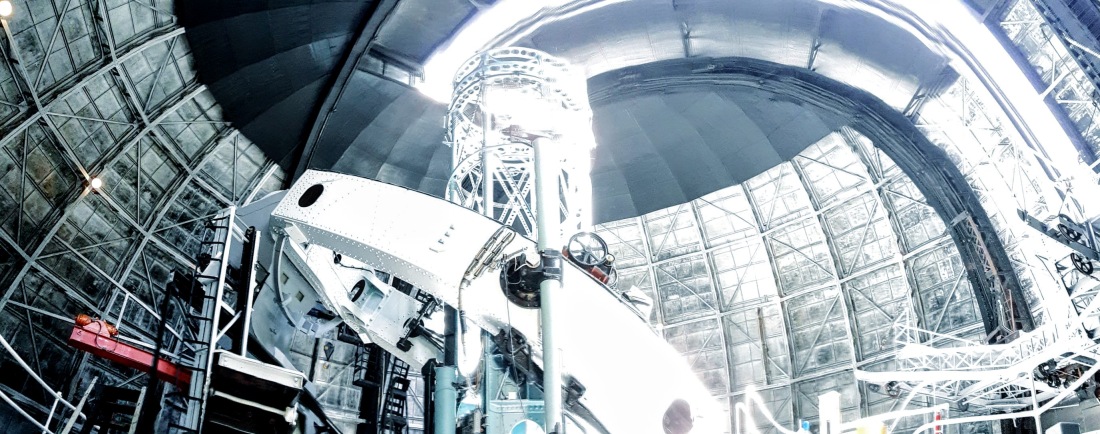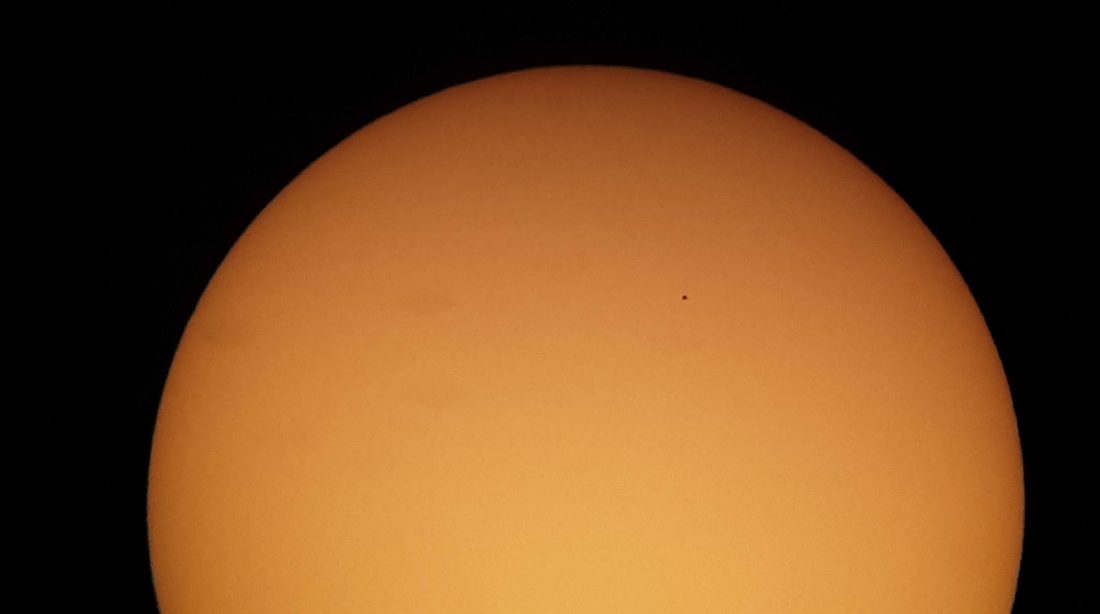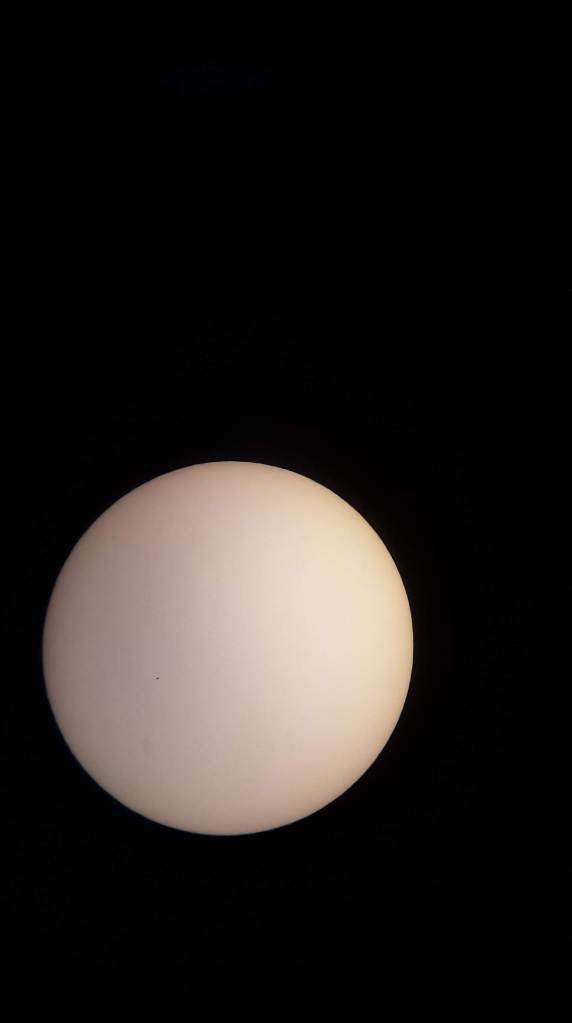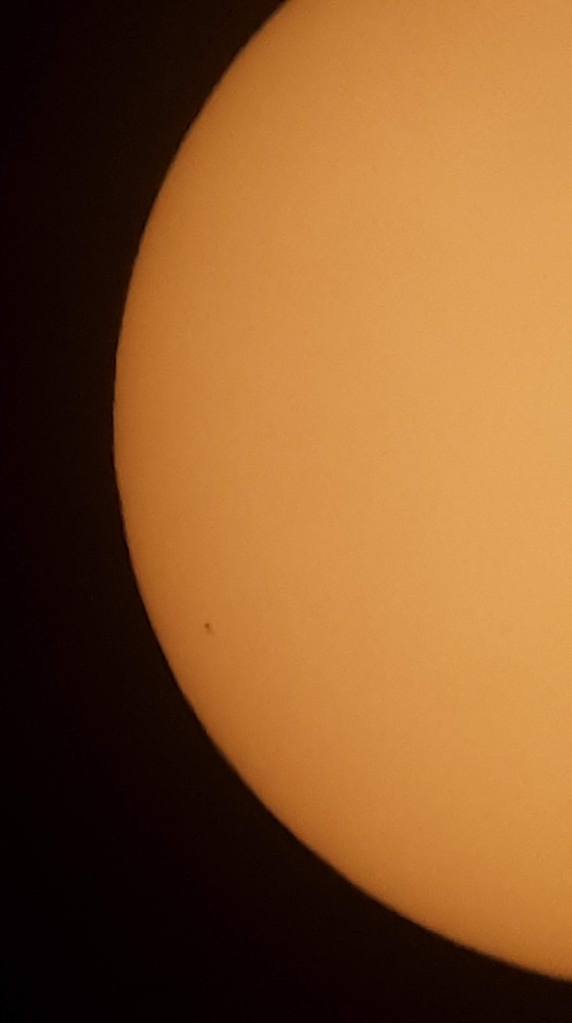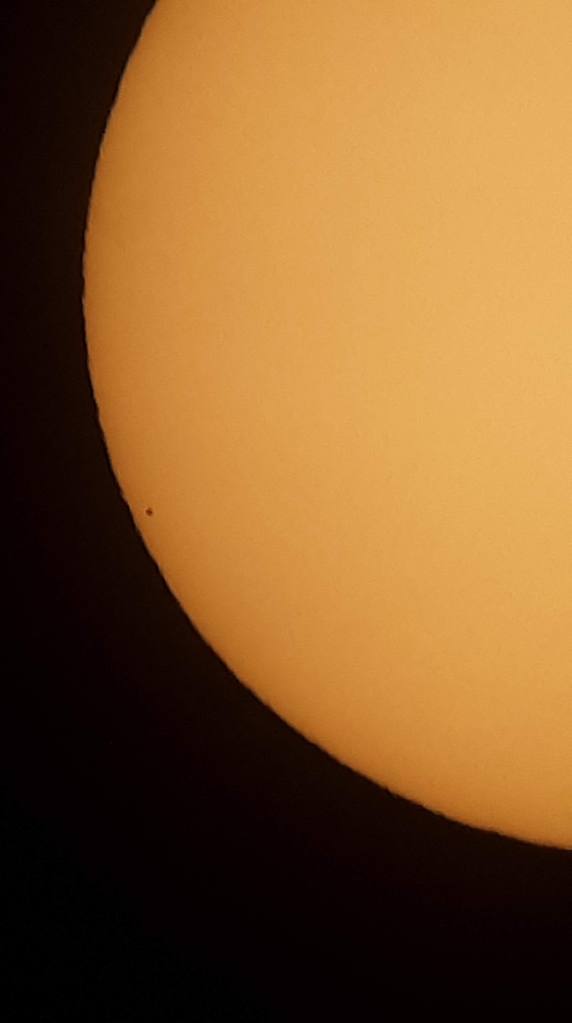Prelude
September 2, 2018, was a cloudy Sunday morning in Los Angeles. I was really tired. I had been on the road for close to five weeks, a personal record, and it was taking a toll. As an introvert I might expect to have been energized by so much time alone, but that isn’t really how it always works. In particular, I had never been away from my wife for so long, and I missed her terribly. I had seen none of the folks I usually engage with for all that time, too, and I was kind of lonely. I was on a great adventure to see some of the greatest American observatories ever, but I got up thinking, “If I have to go look at another damn telescope today, I’m gonna scream.”
That wasn’t anything I had expected for this trip. It was a sabbatical, after all, and it was supposed to be rejuvenating and energizing and whatnot. The trip was designed around my favorite hobby, one that I regularly turn to when I want to experience a sense of awe, and for the most part it was delivering that. At the same time, I was really feeling homesick and overstimulated. So I gave serious thought to skipping my scheduled trip to Mount Wilson.
This is how I recorded it in my journal a few days later:
I actually gave thought to blowing off Mt. Wilson. I’ve seen a LOT of telescopes and I was tired and whelmed. But this is what I had come so far to see and do! So I went, and glad I did.
My journal, September 5, 2018
One of the things that helped me get over the hump, as it were, was watching the worship service from Catoctin Presbyterian Church, the congregation I serve as pastor. We had been doing a live stream for about a year before I went on sabbatical, and that continued a little sporadically while I was away (as I was the primary tech driver for the project). This particular Sunday, they did have a broadcast. Being the first Sunday of the month, there was communion, and my wonderful wife and colleague Molly was the preacher and celebrant (the minister leading the sacrament). It’s hard to remember that we haven’t always been savvy with videoconferencing, but watching the service was about the first time I’d seen Molly since I’d been traveling, and it did my heart good. So, too, to see and hear my church family. When it came to the sacrament, I recorded in my journal:
I dipped my bagel in my coffee as they did communion.
My journal, September 5, 2018
Again, at the time virtual communion was entirely unknown and to some extent unthinkable, so I didn’t count it as fully communing, but it was the next best thing, and it made me feel connected again. This, I think, as much as anything, gave me the stillness of soul and clarity of purpose to make the trip to Mount Wilson that day.
Up the Hill
I was surprised when I mapped the drive up to Mount Wilson from my flat in Glendale, as it’s about 10 miles as the crow flies, but 27 miles driving and, according to Google Maps, 48 minutes travel time. You might think that after ascending so many mountains I would have figured out that it isn’t quick or easy, but I guess I’m stubborn that way. As I set off, with plenty of time to get to the top before the 1:00 p.m. tour times, it was still pretty overcast. The driving was easy on the broad highways of Los Angeles, until the turnoff to head up into the hills of national forest land, then it was two lanes and switchbacks the rest of the way. Hence, 48 minutes for 10 miles. About two thirds the way up, the weather broke suddenly for the better as the clouds fell away. No, seriously, I drove up out of the clouds and could look over the top of them! It was spectacular.
Not long after, I reached the summit parking area, which is surrounded by antennae of various types. It was not clearly marked where one ought to park for scientific geekiness as opposed to mountain biking or hiking, so I took first available. It was a short walk to the Cosmic Cafe where you buy your parking pass (if you haven’t already done so in the lowlands), regardless of your purpose on the mountain, and also tour passes for the observatory (to say nothing of food). Both passes were pretty reasonably priced. Standing around in the pavilion of the cafe, there were posters declaring the 150th anniversary of George Ellery Hale’s birth, 1868-2018, a point I had not realized in all my preparations and learning. How cool!
Eventually a group of about a dozen other nerds gathered for the 1pm tour, and we set out. Our docent was a retired engineer whose name is now far gone from my memory, but he was very personable and knowledgeable, as you would want in a docent. The campus is very pretty and quite a natural setting, bustling with evergreens and wide views of the valley below. It isn’t as carefully crafted as Lowell Observatory in Flagstaff, which seems to have been designed for visitors, but it is more like walking in a national park that happens to be home to a world class science outpost, which is what it is, of course.
Some of the first knowledge imparted was about how Hale selected the site, and how they built it up, and how they brought the equipment and instruments up the mountain with mules and carts. Not even kidding. The project started in 1904, so cars and trucks weren’t much of a thing yet, and this was pretty remote territory at that point. So naturally it took years before Hale and Co. could get any science done. This really isn’t unusual in the realm of astronomy, the long haul of time and materials in remote places to build a bigger telescope. It’s still happening in the Atacama Desert of Chile and the Australian Outback. There’s even talk of building a telescope on the far side of the moon, which would take the pattern to a whole new level. But I digress.
Starting with the Sun

There are several observatories on the Mount Wilson campus, actually. The first we saw were the 60-foot and 150-foot solar observatories, the white heads of which both towered above the trees. Hale was himself a solar observer of some renown, so it isn’t surprising that he set up a sun tower at the new site. (If you haven’t been following along, and after two and a half years, there’s no reason for me to expect you would, the old site was the Yerkes Observatory in Williams Bay, Wisconsin, where Hale had organized the construction of the world’s largest telescope of 1897, the 40″ refractor. Before that he had a home observatory outside Chicago. The sky conditions in both places were regularly pretty poor, so this California mountain was a huge upgrade.)
The way the solar towers work is there is a little dome at the top with a mirror and clockwork that tracks the sun. The light is reflected down a central shaft into a control room/laboratory where the image is projected and can be measured and recorded and whatnot. Astronomers could and can take spectra by sending the light through a prism or diffraction grating to spread it out. That gives you data to figure out what elements are present in the sun, among other things.
So we went to the lab of the 150-foot tower (actually the third solar telescope on the mountain) and met Sam, a solar astronomer who works there. They still do science there, recording and measuring sunspots and spectra and such. It’s not real cutting edge work these days, but this lab has some of the longest continuous records of solar observations at a single site in existence, and the early work done there really was groundbreaking. You can read more about it on the Mount Wilson website. It’s worth a read. I just learned some things I had missed or forgotten that raised Mr. Hale some more in my estimation, which was already pretty high.
There is a small museum near the 150-foot tower that we stopped to see. We didn’t spend very long there, though. They have a variety of documents, letters, photos, and a diorama of the observatory campus. It would have been interesting to spend some time there, but we had other fish to fry.
The Big Hooker

The centerpiece that I was most eager to see is the 100″ Hooker Reflector Telescope. This was the third “World’s Largest Telescope” that Hale was responsible for bringing into existence and the one that produced some of the most shocking discoveries in modern astronomy. Gaining first light in late 1917, the Hooker Telescope was at the same time a remarkable technological achievement and a remarkably flawed instrument. The closed yoke mount looks like a tank or a battleship (your preference), and the cage of the optical tube is impressively large. Coming as it did early in the industrial age when steam and mules were still major power sources, the mass and precision of the instrument is considerable.
The 100″ primary mirror is its greatest technological advance and also its greatest technological hindrance. No one had ever cast such a large piece of glass successfully, and it took quite a few attempts and several different contractors to actually do it. That they managed it at all was no small feat, but they only just barely managed. The glass is terrible quality, riddled with bubbles. We actually got to see a small section of it, and it’s stunningly bad! Bubbles in your mirror make it extremely difficult to get a smooth polished surface without pits and divots. Bubbles also mean the thermal and strength properties of the mirror are inconsistent, which leads to inconsistent expansion and contraction from warming or cooling, which causes distortions in the surface, which causes distortions in the image. Inconsistent stresses can also lead to things like cracking or shattering, which you don’t generally want for your mirror. Amazingly, the technicians were able to figure and polish the mirror smooth enough to do its job (within a millionth of an inch!), and it hasn’t cracked yet.

So they got it to work, and it turned out to be pretty good. Hale did start making plans immediately for a bigger and better telescope (the 200″ at Palomar), but the 100″ didn’t go to waste. This is the telescope used by Edwin Hubble and Milton Humason to discover, first, that the universe is bigger than just our galaxy, that there are in fact many galaxies, and second, that this much-larger-than-imagined universe is expanding. These were both radically revolutionary ideas in the 1930s. Other sites cover this much more thoroughly and intelligently than I can here, so I encourage you to learn about it if you aren’t familiar. My own connection to this is that when my dad passed on to me my grandfather’s homemade 6″ telescope, he told me how Grandpa would observe the Great Andromeda Nebula as a favorite target. This “nebula,” as it was known before Hubble, is now known as the Andromeda Galaxy, a spiral galaxy and bigger neighbor to the Milky Way. It’s the same galaxy that Hubble and Humason observed, discovering it was over 2 million lightyears away, when everything else being observed was on the order of tens of thousands of lightyears distant. So Andromeda is a favorite of mine, too.
Anyway, our docent was telling us about Hubble and the telescope and all while we were under the dome, which was open, and it was awesome. Meanwhile, I want to tell you about three things going on besides the telescope and the lesson, just because I think they were unusual. First, while we were there, they closed the shutters in the dome. This was pretty cool, and I got video of it. It’s faster and quieter than you might imagine. They closed the shutters because the sun was starting to shine on the telescope, which you never want, and the sun was warming up the inside of the dome. Both were unwanted because of item of interest #2, they were preparing to have a soiree in the dome later that evening. There would be jazz music, and guests (donors?) would get to look through the Hooker. So they wanted the dome to be cool and the telescope to be in thermal equilibrium for a good viewing experience. I had never thought of having a jazz party in an observatory dome, but I can’t think of anything much cooler than that. (Nerd!) This was so exciting it must be what led to item of interest #3. While the docent was telling us about Hubble, I looked around a bit. There is a visitors’ gallery half a floor down from the observing floor where we were, with large glass windows so guests can watch what is happening on the observing floor without getting close enough to mess anything up. In a reverse of that, I noticed down in the gallery there was a woman sitting on a man’s lap, and they were making out like crazy. Astronomy is so hot! Definitely not something I expected to see in the hallowed science halls.
We got to mill around in the dome for a while and even to touch the mighty Hooker. The docent showed us the bad mirror glass, leading to the picture above. I took many a selfie in front of this important instrument. Then we made our way outside heading toward the next tour stop. On that way there’s a spot where a famous picture was taken of Albert Einstein when he came to visit Mount Wilson and see (and use?) the great 100″ reflector. So naturally, we all took selfies on the spot. Einstein wasn’t keen on the idea of an expanding universe, and for many years dragged his feet in accepting it as true, although he eventually caved. He would have flipped completely at the discovery in 1997 that the expansion of the universe is accelerating. At any rate, it was kind of exciting to stand where your heroes have trod. It’s part of what made this a pilgrimage for me as opposed to just a big sightseeing trip.
4, 3, 2, …
Our last stop was to see the 60″ reflector. This telescope also was once the “world’s largest,” but now it is more like a forgotten middle child. It doesn’t even have a cool benefactor name, just “the 60-inch.” It was the successor to the Yerkes 40″ refractor and was itself succeeded by the 100″ Hooker. It was also cutting edge technology in its day and is still a formidable instrument for most people on the planet. I, for one, would love to spend a clear night with it. But these days public outreach is its main job as opposed to significant science.
Here’s what I wrote in my journal:
George E. Hale was responsible for the largest telescope in the world four times in a row, and now I’ve seen them all. Two of them are on Mount Wilson. They run Yerkes 40″, Mt. Wilson 60″, Mt. Wilson 100″, Palomar 200″. I saw them Yerkes-Palomar-MW100-Mw60. Consequently, by the time I got to the 60″ – five feet in diameter, mind you – it looked tiny! But the docent was very good and all the scopes in their context are quite impressive.
My journal, September 5, 2018
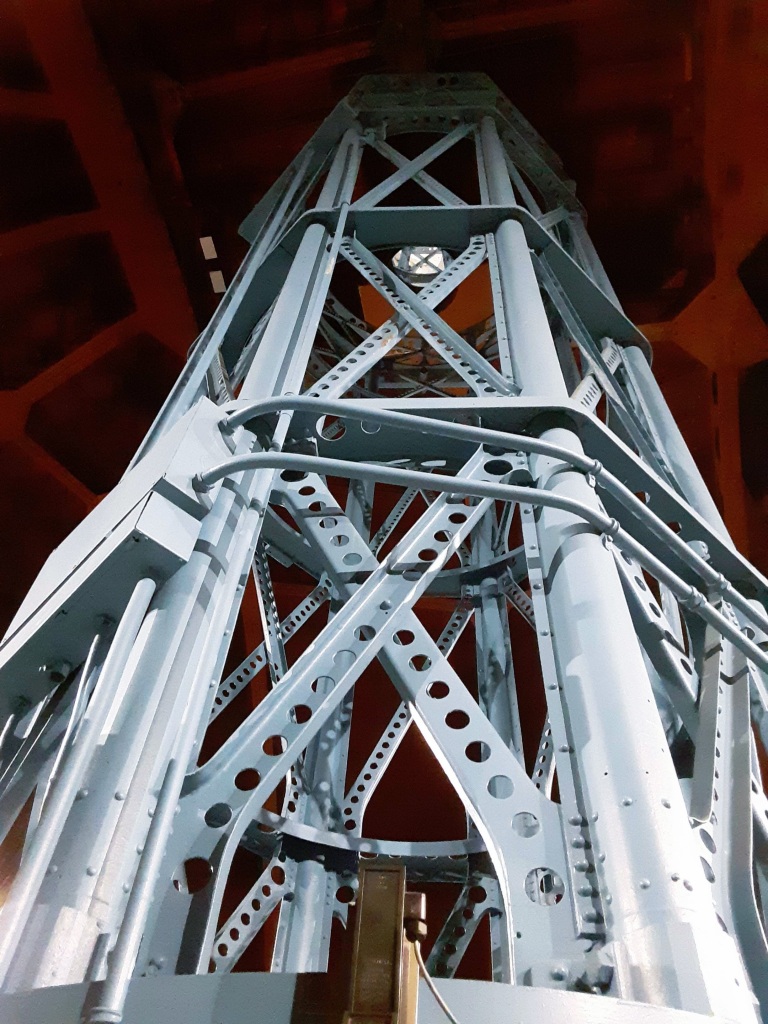
Indeed, the docent acknowledged that seeing the 60″ after the 100″ does a disservice to the smaller scope, which was and is, as I mentioned, a remarkable instrument. We got to see the mirror glass on this one, too, and it is beautiful and clear, as it should have been. One fascinating part of the mounting system for this scope is that it rests in a pool of mercury that holds about 95% of its weight! This is a clever and very stable engineering solution except for the part about mercury being poisonous, which was apparently not well understood at the time. The optical tube for the scope is like steel girders, like an oversized Erector Set, for those old enough to remember such.
When I think of the dome for this one-time champion instrument, it seems kind of homey and rustic, like a cabin in the woods where you might spend a weekend. This is odd, because when I just looked at my photos I see that it is actually a metal framework and not the wood that I was imagining. Still, there was something cozy about the dome, especially after the lofty grandeur of Palomar and Hooker. I imagine that the guys that built it and used the 60″ didn’t think of it in those terms. I suppose for them it was a cutting edge outpost in the wilderness of science and the wilderness of California.
Postlude
That brought the tour to an end. It was a little anticlimactic, but I was satisfied. It had turned out to be a beautiful warm day, and after a few hours of science and fresh air I was tuckered out. I was also pretty hungry, as that bagel was the last thing I’d eaten. So I made my way back to the Cosmic Cafe and got a lovely pastrami panini and a cup of coffee, if I recall, which were very good and not too expensive. They had no swag at all, which was very disappointing. When I got home I ordered a t-shirt of my own design with my own picture (see top of the post) from Cafe Press, and that sufficed.
I am so very glad I dragged myself out that morning. I have seen the four great Hale telescopes and more, and I overcame the lethargy that would have led to regret. In my journal, I wrote this:
I began to realize that I was having an experience like what I would expect had I done the Camino in Spain. Long and far and alone and awesome and exhausting.
My journal, September 5, 2018
Pilgrimage is a challenging road, filled with long slogs, many hardships, and in the best cases moments of brilliance. It is in persevering through the slogs and hardships that we put ourselves in a position to receive the brilliant. Whether it comes or not, we will be stronger and richer for the experience. That’s the theory, and it seems to have paid off this time.
I had a couple other smaller adventures before the end of my time in L.A. I had lunch in Pasadena with a church friend from Catoctin who was on extended stay in the area. I went to visit the headquarters of the Planetary Society, also in Pasadena. And I got to spend some more time with friend Steve Craig who bookmarked my sojourn by getting me back to the train station. Maybe I’ll tell you about those before I’m done with all this. Also, remind me to tell you about the guy at the gas station near LAX. But I was looking forward to the next leg of the sabbatical with great anticipation. Molly was coming to join me in Albuquerque, NM! Stay tuned.
